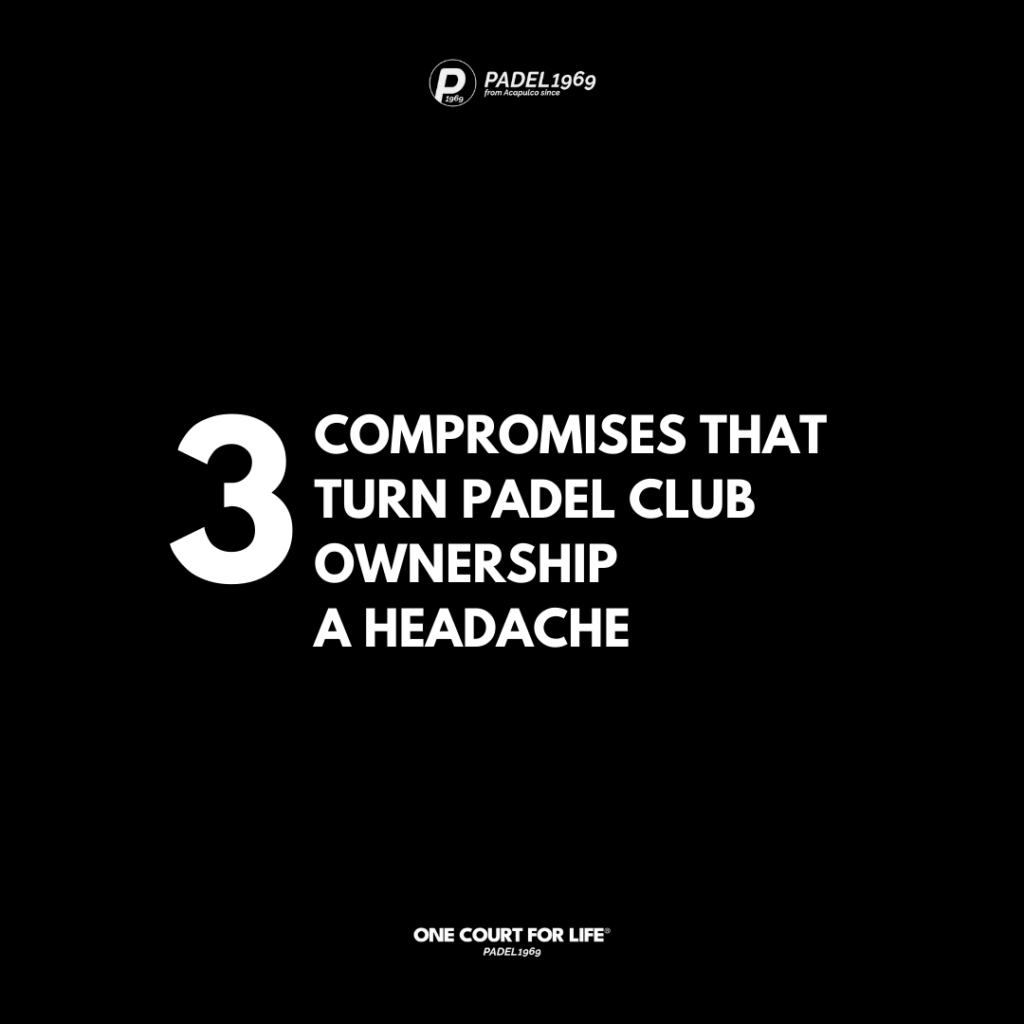Padel has exploded in popularity worldwide, making it an attractive business opportunity. However, many entrepreneurs jump into the industry without fully understanding the operational and financial challenges that come with running a padel club. While passion for the sport is crucial, it’s not enough to ensure long-term success.
Many club owners make compromises that lead to financial strain, operational stress, and an underwhelming customer experience. What starts as an exciting venture can quickly turn into a frustrating and costly headache. Here are the three biggest mistakes padel club entrepreneurs make—and how you can avoid them to build a thriving, profitable club.
1. Compromising on Location and Facility Quality
The phrase “location, location, location” is just as relevant for padel clubs as it is for any other real estate-driven business. Some entrepreneurs choose a site based purely on low rental costs, believing that if the courts are built, players will come. Unfortunately, a bad location can lead to low foot traffic and make customer acquisition a constant struggle.
What makes a great location for a padel club?
- High visibility and accessibility
- Proximity to residential areas or business districts
- Good parking and public transport options
- Space for additional amenities (locker rooms, lounges, pro shops)
In addition to location, facility quality matters. Low ceilings, poor lighting, and substandard court surfaces negatively impact the playing experience. Players have plenty of options today, and they will choose clubs that invest in professional-grade courts with good lighting, a comfortable playing environment, and quality infrastructure.
Solution: Before committing to a location, conduct thorough market research. Analyze demographics, traffic patterns, and competitor positioning. Investing in a high-quality facility will not only attract more players but also increase customer retention and word-of-mouth referrals.
2. Underestimating Operational Costs and Cash Flow Needs
Many club owners assume that court bookings alone will cover expenses, but running a padel club involves more than just renting out playing time. Recurring costs such as staff salaries, equipment maintenance, software subscriptions, marketing, and loan repayments can quickly eat into profits.
Common financial mistakes:
- Overestimating initial demand and underpricing courts
- Failing to account for maintenance and unexpected repairs
- Not investing in a strong membership and revenue model
- Relying too much on peak-hour bookings while neglecting off-peak strategies
Solution: Successful padel clubs diversify their revenue streams. Besides court rentals, consider adding:
- Membership models for recurring income
- Coaching programs and training academies
- Retail sales (rackets, shoes, apparel, accessories)
- Food & beverage services
- Corporate and social event hosting
Building a solid financial plan with realistic projections is key. Work with experts who understand the economics of padel clubs to avoid cash flow issues that could jeopardize the business.
3. Ignoring Customer Experience and Community Building
Many entrepreneurs focus on building courts but forget that padel is a social sport. A club that lacks community engagement will struggle with retention, forcing constant marketing efforts to attract new players instead of keeping existing ones.
What separates a thriving club from an average one?
- Well-organized leagues and tournaments that keep players engaged
- A welcoming environment that fosters social interaction
- A strong coaching program for beginners and competitive players alike
- Quality service and staff who enhance the customer experience
Clubs that invest in their members’ experiences create a sense of belonging, leading to better retention, higher word-of-mouth referrals, and long-term profitability.
Solution: Focus on creating an engaging club atmosphere. Organize regular social events, tournaments, and coaching clinics. Invest in digital tools that make booking easy and offer personalized communication to members. A padel club should feel like more than just a place to play—it should be a community hub where people want to return week after week.
Build a Padel Club That Thrives
Avoiding these mistakes requires experience, strategic planning, and a deep understanding of the padel industry. If you’re looking to invest in a padel club and want to do it right from day one, partnering with experts can make all the difference.
With the right approach, you can avoid rookie mistakes, make smart investments, and build a padel community that flourishes—while maximizing long-term ROI. If you’re serious about succeeding in the padel business, let’s connect and discuss how to turn your vision into a thriving operation.
Need advice about in investing in Padel sector?
Book a call with us if you want to build a Padel court and don’t know where to start, or contact us at [email protected] for more on our advisory services.
PADEL1969 | from Acapulco since 1969.


